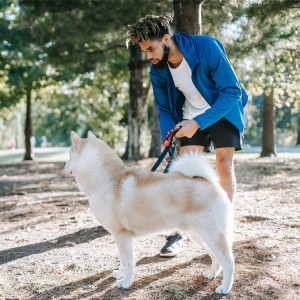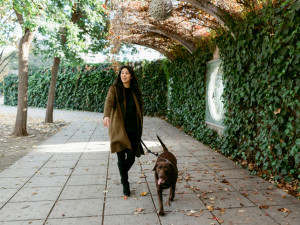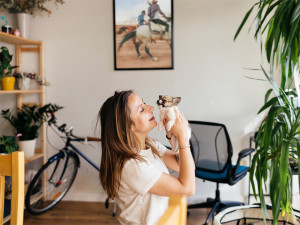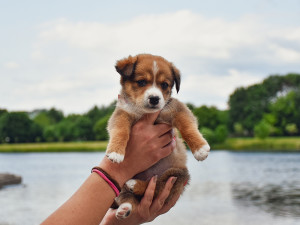5 Reasons to Start Agility Training With Your Puppy
Learn how to better communicate with your puppy through agility training
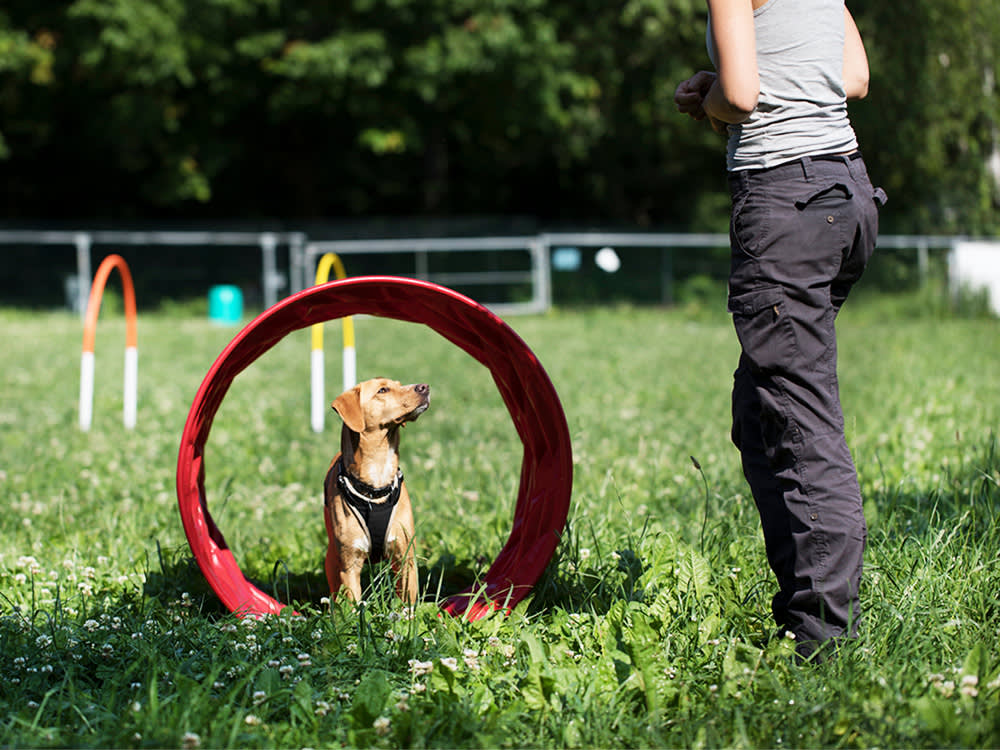
share article
After you tackle basic obedience with your puppy, what’s next? Try puppy agility. In puppy agility, dogs are guided through obstacles, such as jumps and weave poles, in a particular order within an allotted time frame.
Agility is more than just a sport – here are five reasons why you and your pup should give it a go.
What is agility training?
The birth of dog agility training is credited to an entertainment stunt that took place at the 1978 Crufts dog show in Birmingham, during a break between competitions. Spectators were intrigued by the complexity, speed and skills demonstrated by the dogs, and ta-da: agility became an event.
Five reasons to do puppy agility
1. Improve puppy behaviour outside the ring
Agility training is done off lead, so you must train your dog to listen without the assistance of a lead. When working with your puppy on agility training, you’ll be developing their recallopens in a new tab and obedience, and offering a variety of experiences that can result in a more confident pet who listens well and responds to your cues.
2. Bond with your pup while having fun
It’s fun to run around directing your pup into tunnels and over A-frames. Not only because it’s exciting, but because of the deepened relationship that forms between you in the process. Making dog training experiences enjoyable for your puppy should always be the goal – you want your puppy to look forward to learning with you.
3. Learn new ways to communicate
The fundamental gift of dog agility isn’t manoeuvring obstacles. It’s learning to better communicate with your puppy, and teaching them how to understand what you want. “I help pet parents learn how to communicate with their dogs effectively and how to see things through their dogs’ perspectives. When students learn new ways to communicate so that their dogs understand, there are wonderful relationships created that extend well beyond the great fun of the agility field,” says Le-Ann Elgie of Diablo Peak Dog Sports.
4. Agility training is great exercise
Unlike in other dog sports, both you and your dog will be active participants. Because the handler usually runs alongside their dog, everyone gets a workout. You’ll navigate between obstacles while your dog will take up challenges, such as having to traverse weave poles, run through multiple tunnels, and cross a dog walk high off the ground.
5. You and your puppy become a team
Puppy agility training requires teamwork: it’s the pet parent’s job to guide the pup successfully through the proper sequence. Because dogs rely on your body language to tell them what obstacle is next, you’ll become more conscious of your body language. For example, you’ll be aware of which way your feet are pointing – a cue that can be more important than a verbal command.
How long does it take to get started?
Typically, it takes a minimum of one year to train a dog on the equipment required to take part in dog agility competitively. The Kennel Club and UK Agility are a few of the primary organisers. Getting started early with your puppy will improve their agility skills, their bond with you and their overall obedience.
Jill Hedgecock
Jill Hedgecock is the author of three novels and writes a monthly dog rescue column.
Related articles
![Woman walking her dog in a park]() opens in a new tab
opens in a new tabDog Walking 101: How Often You Should Walk Your Dog
Your dog may need more exercise than you think, according to three pet experts
![woman with new puppy]() opens in a new tab
opens in a new tab9 Unexpected To-Dos for New Pet Parents
Sound advice from seasoned dog and cat parents who have been there
![Two hands holding a very young tan and white puppy up in front of a lake landscape]()
How to Socialise a Puppy
Everything you need to know to get your new addition off to a good start
![A senior Retriever/Terrier mixed breed dog shaking hands with its owner.]() opens in a new tab
opens in a new tabHow to Teach an Old Dog New Tricks
Your senior dog might move slower these days, but that doesn’t mean they can’t learn new things
